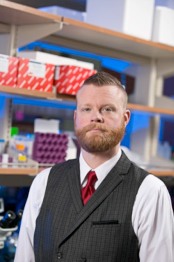Program Information
Biological Validation of a Novel High-Throughput Irradiator for Predictive Radiation Sensitivity Bioassays
TL Fowler*, JA Martin , AJ Shepard , AM Bailey , KP Nickel , RJ Kimple , BP Bednarz , University of Wisconsin, Madison, WI
Presentations
WE-E-BRE-3 Wednesday 1:45PM - 3:45PM Room: Ballroom EPurpose: The large dose-response variation in both tumor and normal cells between individual patients has led to the recent implementation of predictive bioassays of patient-specific radiation sensitivity in order to personalize radiation therapy. This exciting new clinical paradigm has led us to develop a novel high-throughput, variable dose-rate irradiator to accompany these efforts. Here we present the biological validation of this irradiator through the use of human cells as a relative dosimeter assessed by two metrics, DNA double-strand break repair pathway modulation and inter-cellular reactive oxygen species production.
Methods: Immortalized human tonsilar epithelial cells were cultured in 96-well micro titer plates and irradiated in groups of eight wells to absorbed doses of 0, 0.5, 1, 2, 4, and 8 Gy. High-throughput immunofluorescent microscopy was used to detect γH2AX, a DNA double-strand break repair mechanism recruiter. The same analysis was performed with the cells stained with CM-H2DCFDA that produces a fluorescent adduct when exposed to reactive oxygen species during the irradiation cycle.
Results: Irradiations of the immortalized human tonsilar epithelial cells at absorbed doses of 0, 0.5, 1, 2, 4, and 8 Gy produced excellent linearity in γH2AX and CM-H2DCFDA with R2 values of 0.9939 and 0.9595 respectively. Single cell gel electrophoresis experimentation for the detection of physical DNA double-strand breaks in ongoing.
Conclusions: This work indicates significant potential for our high-throughput variable dose rate irradiator for patient-specific predictive radiation sensitivity bioassays. This irradiator provides a powerful tool by increasing the efficiency and number of assay techniques available to help personalize radiation therapy.
Contact Email:


